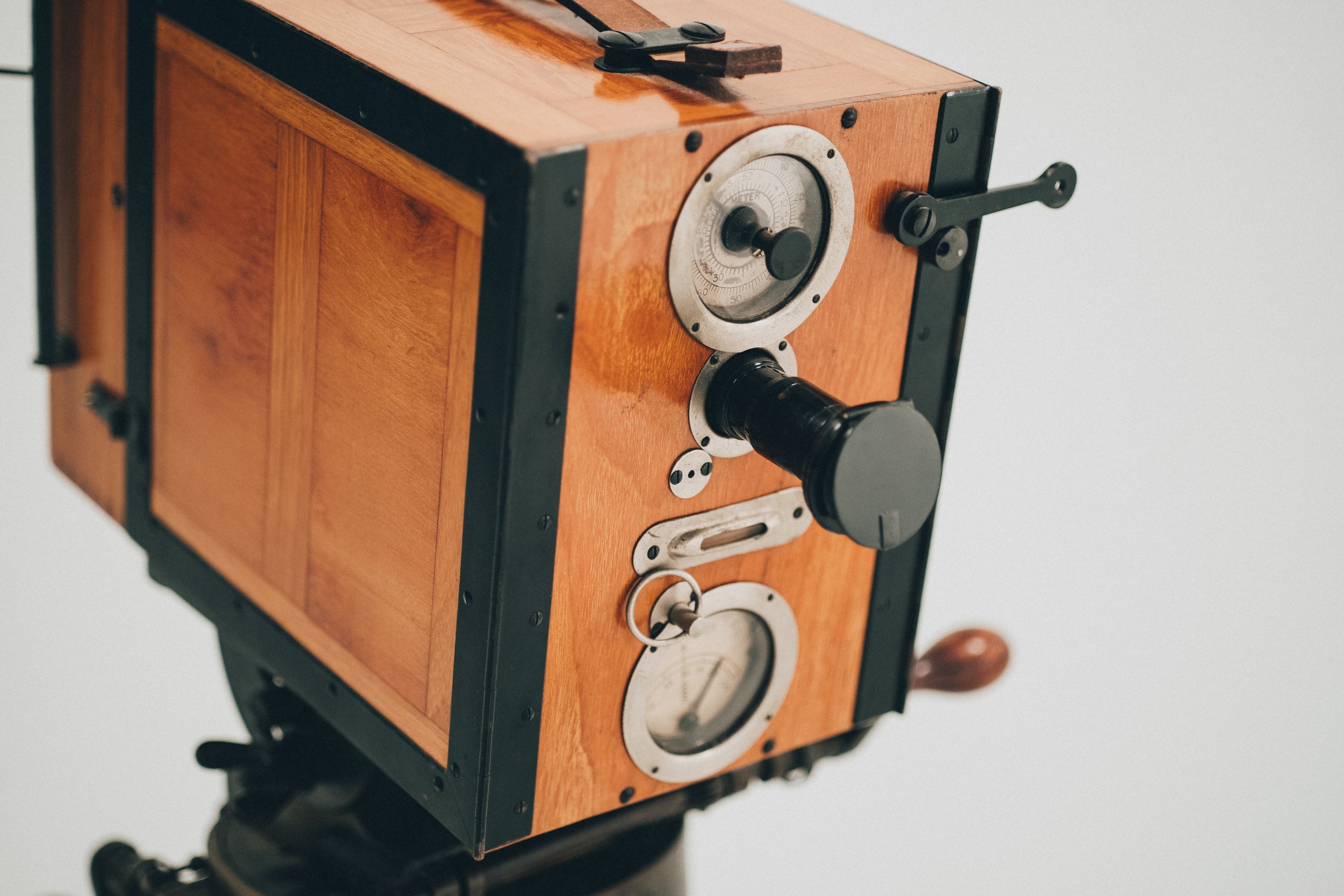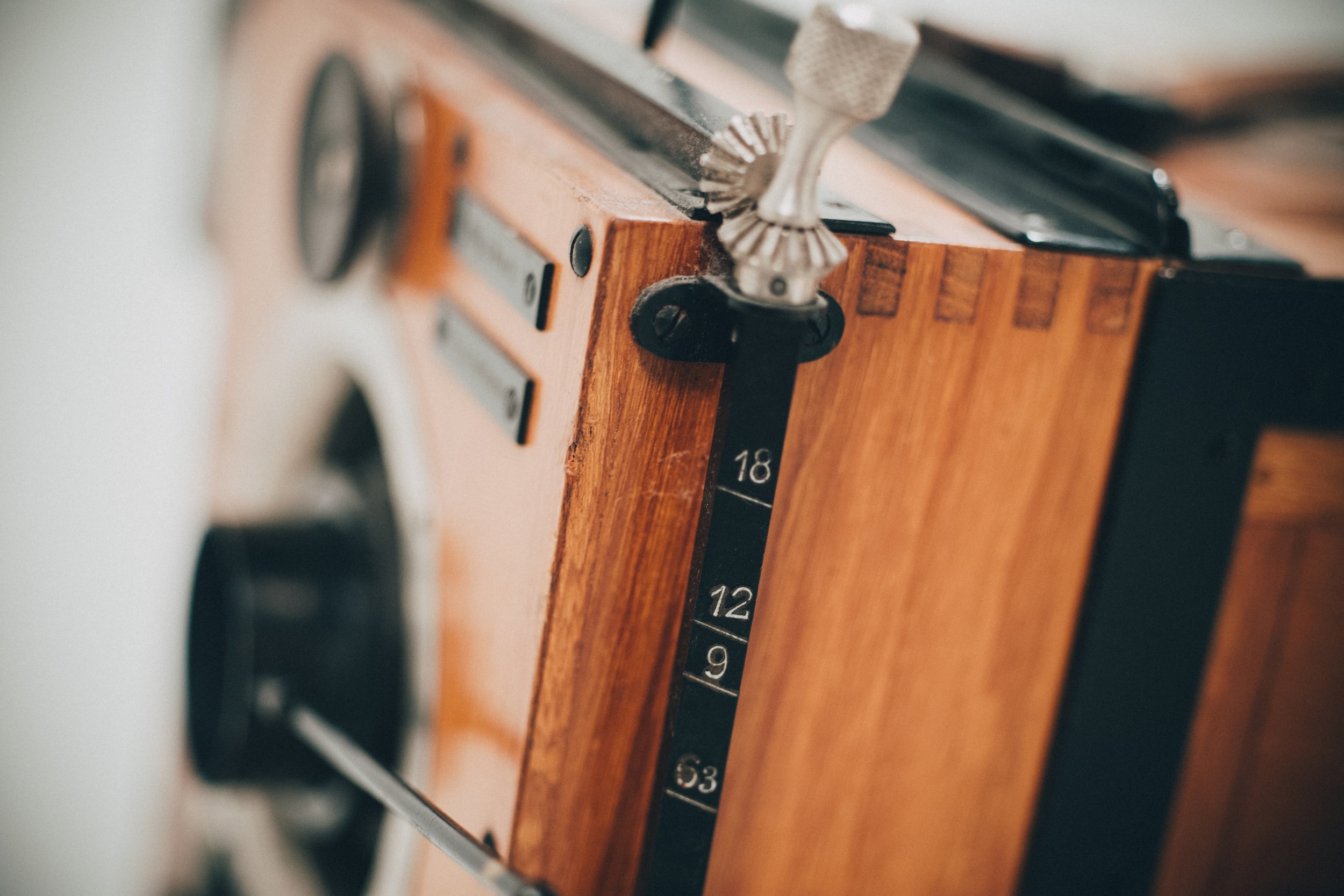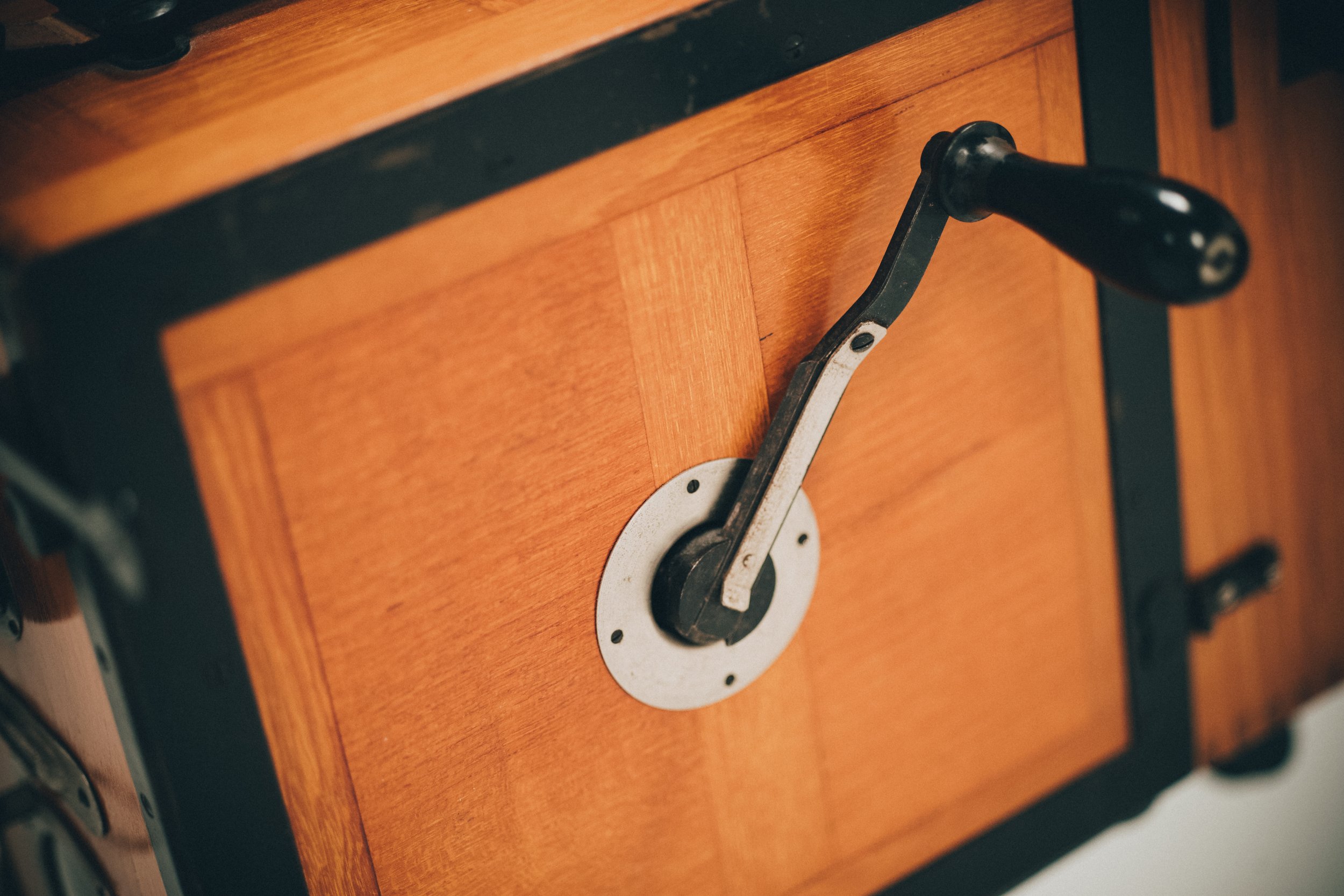Ernemann Kino Model E
c. 1917 Ernemann Kino Model E
The Kino Model E was manufactured by Ernemann Cameras in Dresden, Germany, beginning in 1917. This cinematographic camera was renowned throughout the world for its build quality and features. The Model E was produced from 1917 to 1926.
This example features an exceptional teak housing and represents one of the earliest models produced around 1917.
Ernemann's Kino Model E is their fifth 35mm Kino model, following the Kino models A, B, C, CII, and D. It is a beautiful and compact camera with significantly better build quality than any of their previous models.
The wooden body serves as an exterior covering. The camera's film transport and movement, film gate, and drive shafts are all contained within an aluminum and metal frame that is enclosed by the wood body panels. The coaxial 120m film magazines are mounted on either side of the aluminum chassis behind the left and right side doors.
The front panel is hinged and houses the shutter mechanism inside its lid. Two brass knobs on the exterior face of the body control these functions: one unlocks the hinged front and the other releases the shutter mechanism. The camera features a fold-out Newton side finder and rear eyelet, in addition to a rear through-the-film magnified eyepiece for critical focusing on the film.
The rear of the camera features a footage counter dial that measures footage used in meters and frames, a tachometer (crank speed indicator) marked at 16fps and 24fps, a spirit level, and a film punch. The camera's front panel must be in the fully upright position to open the two side panels for access to the film magazines and reveal the impressive movement within.
Ernemann's Kino Model E is a 35mm professional motion picture camera that was very popular into the 1920s. However, it is not unique in the market—it is actually an exact duplicate of an earlier André Debrie model called the Le Parvo, which was created and produced in France starting in 1908.
The hand-cranked Le Parvo was at one time the most popular European-made camera. Even in the early 1920s, the Le Parvo was the most widely used camera in the world. Read more about the Le Parvo line here.
The Kino E is just one example of a manufacturer duplicating or licensing the André Debrie design. The same movement was also utilized by another German company, Askania Werke of Berlin.
Ernemann had previously incorporated other manufacturers' designs in their earlier Kino I and Kino II 17.5mm cameras.
Andre Debrie le Parvo
In 1908, Joseph Debrie developed the Le Parvo [meaning 'compact' or of small dimension] camera, described at the time as a well-built and reliable, compact camera with advanced features. The original cameras were constructed from an aluminum and metal frame housing two coaxial film magazines and a unique movement. The exterior was finished in polished hardwood, but later the Le Parvo series also offered metal and other materials like Bakelite for the exterior covering.
Geared Focus and Iris scale
The camera features a reverse gear, Newton finder, and direct control in the image window. The lens has a threaded mount with focusing controlled by a worm gear. A rotating brass scale offers various focus scales to aid in quick lens changes.
Interior aluminum frame and movement.
The original lens is a Zeiss Tessar 50mm f3.5 No. 271174.
In 1921, the Model E sold for roughly ten times more than the Model C II produced the same year. A 1928 German catalog lists the Model E for 2030 RM and the Model A for 550 RM.
The Model E was a premium camera—one of the best of its era.


















